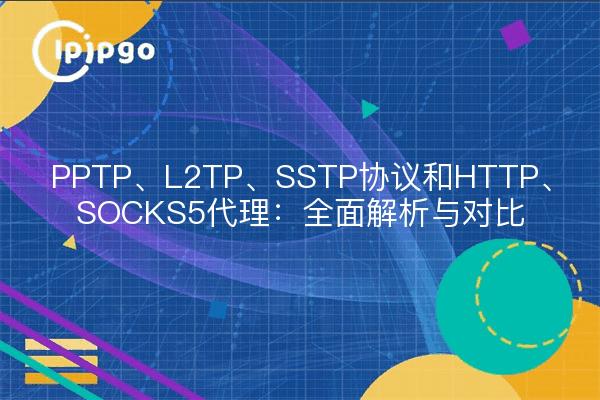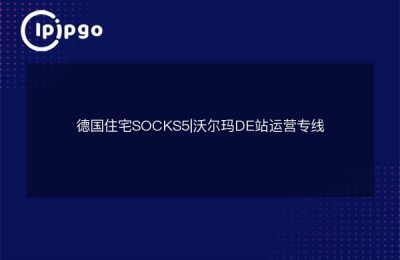
In the realm of network security and privacy protection, virtual private networks have become an essential tool for privacy protection and secure access to network resources. And in the world of virtual private networks, PPTP, L2TP and SSTP protocols are three widely used protocols. Today, we will delve into the features, advantages and disadvantages, and applicable scenarios of these three protocols.
PPTP protocol: an easy-to-use veteran player
PPTP (Point-to-Point Tunneling Protocol) is a VPN protocol developed by Microsoft in the 1990s. Due to its simplicity and broad compatibility, PPTP dominated the early VPN market.
Working Principle
PPTP enables data transmission by encapsulating PPP (Point-to-Point Protocol) in IP packets. It uses TCP port 1723 for control connections and uses the GRE (Generic Routing Encapsulation) protocol to encapsulate packets.
vantage
- Easy to use: PPTP is easy to configure and has built-in support for almost all operating systems.
- Faster: PPTP transfers are relatively fast due to the low encryption strength.
drawbacks
- Lower security: The encryption algorithm of PPTP is relatively simple, easy to be cracked, and not suitable for transferring sensitive data.
- Poor firewall penetration: PPTP is easily blocked by firewalls, resulting in unstable connections.
L2TP Protocol: Balancing Security and Flexibility
L2TP (Layer 2 Tunneling Protocol) is a VPN protocol jointly developed by Cisco and Microsoft.L2TP does not provide encryption on its own, and is often used in conjunction with IPsec (Internet Protocol Security) to provide greater security.
Working Principle
L2TP enables data transfer by encapsulating PPP frames in UDP packets. It uses UDP port 1701 for control connections and data encryption and authentication via the IPsec protocol.
vantage
- High security: L2TP combined with IPsec provides strong encryption and authentication mechanisms suitable for transferring sensitive data.
- Good compatibility: L2TP widely supports various operating systems and devices.
drawbacks
- Complex configuration: L2TP/IPsec configuration is relatively complex and requires more technical knowledge.
- Slower speed: Due to the high encryption strength, L2TP transmission speed is relatively slow.
SSTP Protocol: Microsoft's Security Sharpshooter
SSTP (Secure Socket Tunneling Protocol) is a VPN protocol developed by Microsoft and designed for Windows operating systems.SSTP encrypts and transmits data via SSL/TLS (Secure Sockets Layer/Transport Layer Security) protocol. SSTP encrypts and transmits data through the SSL/TLS (Secure Sockets Layer/Transport Layer Security) protocol.
Working Principle
SSTP enables data transmission by encapsulating PPP frames in SSL/TLS packets. It uses TCP port 443 for communication, which allows SSTP to penetrate most firewalls and proxy servers.
vantage
- High Security: SSTP provides strong encryption and authentication mechanisms using the SSL/TLS protocol to ensure secure data transmission.
- Strong Firewall Penetration: SSTP can easily penetrate most firewalls and proxy servers due to the use of TCP port 443.
- Highly integrated with Windows: SSTP is designed for Windows, easy to configure and highly compatible with the operating system.
drawbacks
- Platform limitation: SSTP mainly supports Windows operating system, and the support for other operating systems is more limited.
- Speed may be limited: Due to the use of the SSL/TLS protocol, the transmission speed of SSTP may be affected to some extent.
HTTP proxy
An HTTP proxy is an application layer proxy that is primarily used to process requests and responses to the HTTP protocol.
Working Principle
An HTTP proxy receives HTTP requests from clients, makes requests to the destination server on their behalf, and returns the server's response to the client.HTTP proxies are commonly used for web browsing, content filtering, and caching.
vantage
- Easy to use: relatively simple to configure and use.
- Content Filtering: You can filter undesirable content and advertisements.
- Cache function: you can cache frequently used resources to improve access speed.
drawbacks
- HTTP/HTTPS only: Only HTTP and HTTPS protocol requests can be processed.
- Less secure: does not provide strong encryption and authentication mechanisms.
Applicable Scenarios
HTTP proxies are suitable for use in scenarios such as web browsing, content filtering and caching, and are especially widely used in corporate and school environments.
SOCKS5 Agent
The SOCKS5 proxy is a generalized proxy protocol capable of handling various types of network traffic.
Working Principle
The SOCKS5 proxy does this by receiving a request from the client, making the request to the target server on its behalf, and returning the server's response to the client. Unlike HTTP proxies, SOCKS5 proxies can handle any type of network traffic, including TCP and UDP protocols.
vantage
- Versatile: Supports a wide range of protocols and applications, including HTTP, FTP, SMTP, and more.
- High security: supports authentication and encryption.
- Strong firewall penetration: able to bypass most firewalls and proxy servers.
drawbacks
- Configuration Complexity: Compared to HTTP proxies, configuration and use are more complex.
- Content filtering is not available: it is not possible to filter undesirable content and advertisements.
Applicable Scenarios
The SOCKS5 proxy is suitable for scenarios where multiple network traffic needs to be handled, such as P2P downloads, online gaming, and remote access.
comparison summary
By comparing the PPTP, L2TP, and SSTP protocols with HTTP and SOCKS5 proxies, we can see that they each have their own strengths and weaknesses and are suitable for different scenarios:
- PPTP, L2TP, SSTP protocols:Ideal for scenarios requiring high security and privacy protection, such as corporate intranets and remote access to sensitive data.
- HTTP proxy:Ideal for scenarios such as web browsing, content filtering and caching, especially in corporate and school environments for a wide range of applications.
- SOCKS5 Agent:Ideal for use in scenarios where multiple network traffic needs to be handled, such as P2P downloads, online gaming, remote access, etc.
concluding remarks
Both VPN protocols and proxy servers play an important role in network security and privacy protection. Understanding the characteristics and applicable scenarios of PPTP, L2TP, SSTP protocols with HTTP and SOCKS5 proxies can help you make a more informed choice in practical applications. I hope this article will inspire you and give you a more comprehensive understanding of these technologies.








